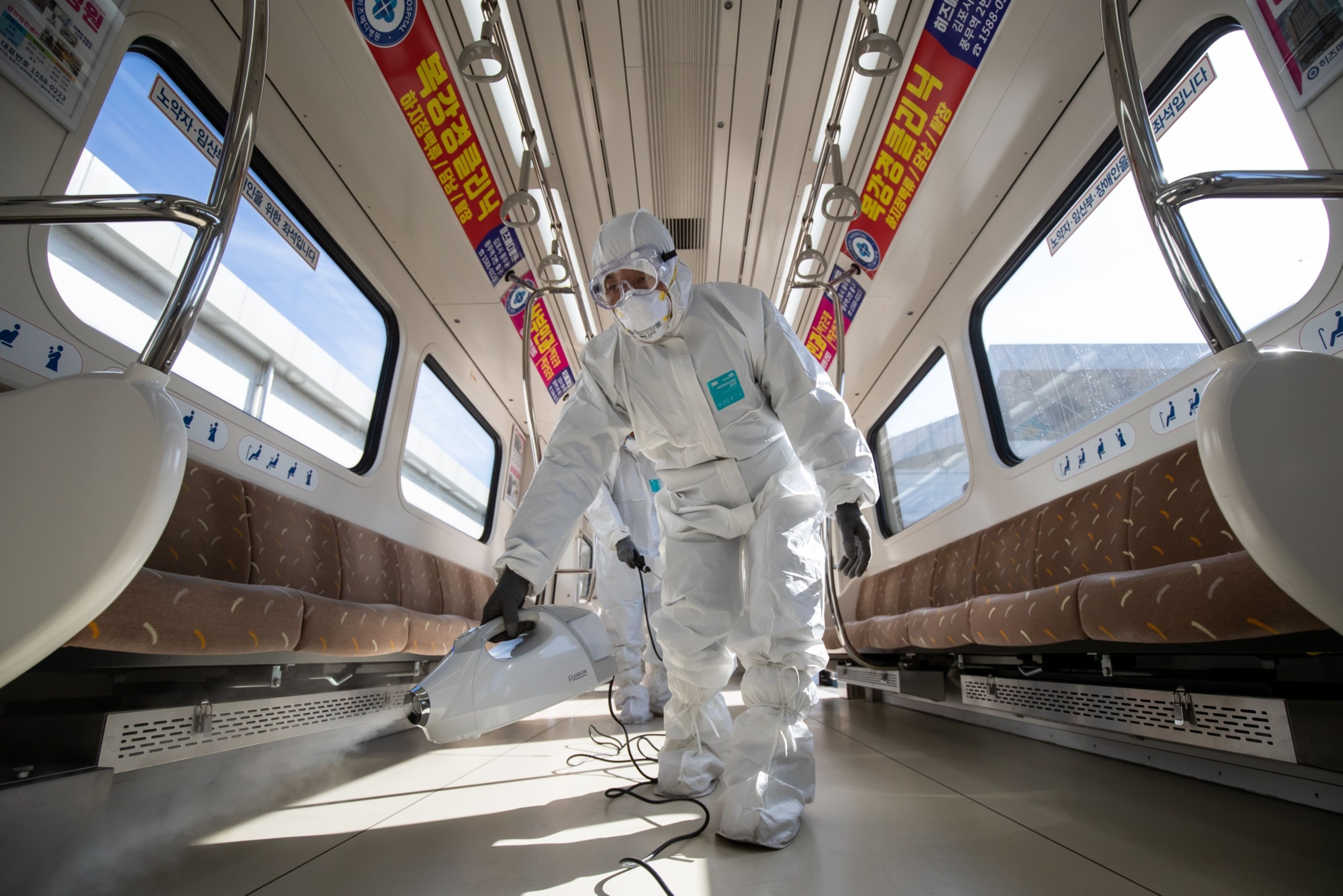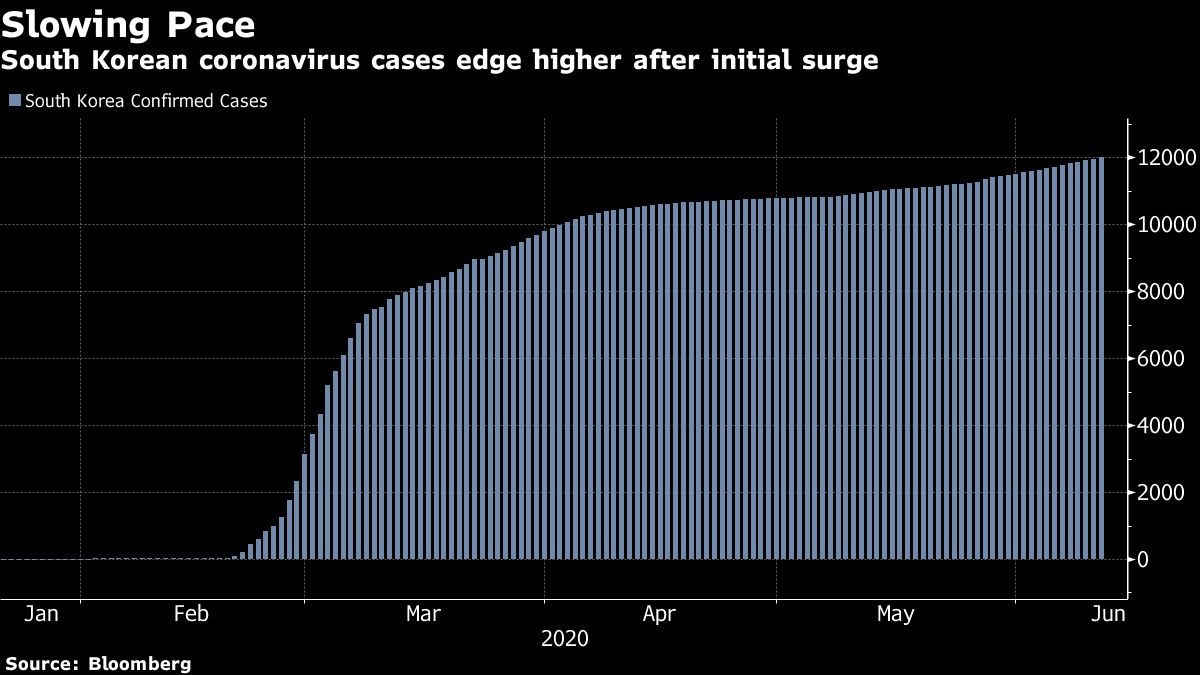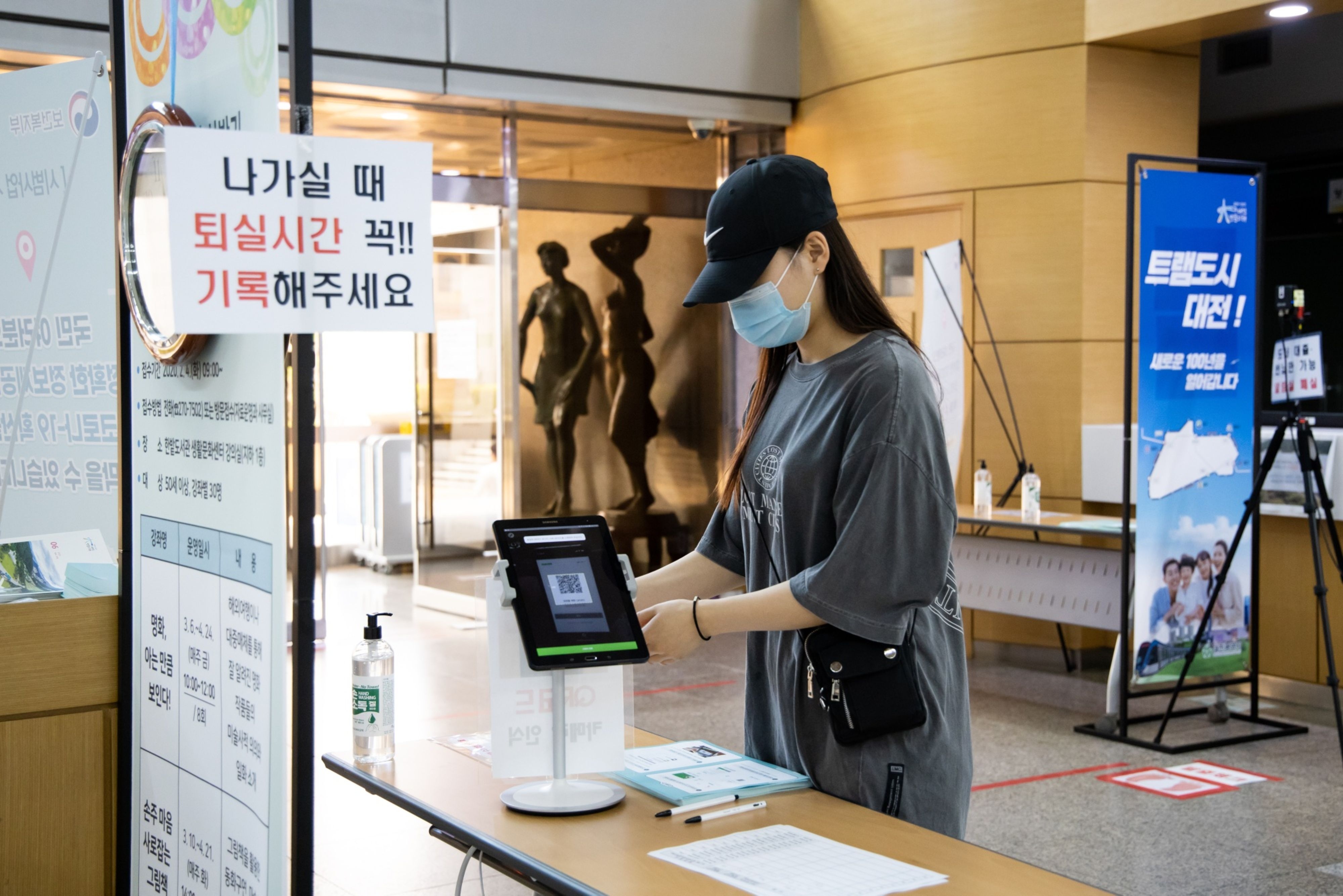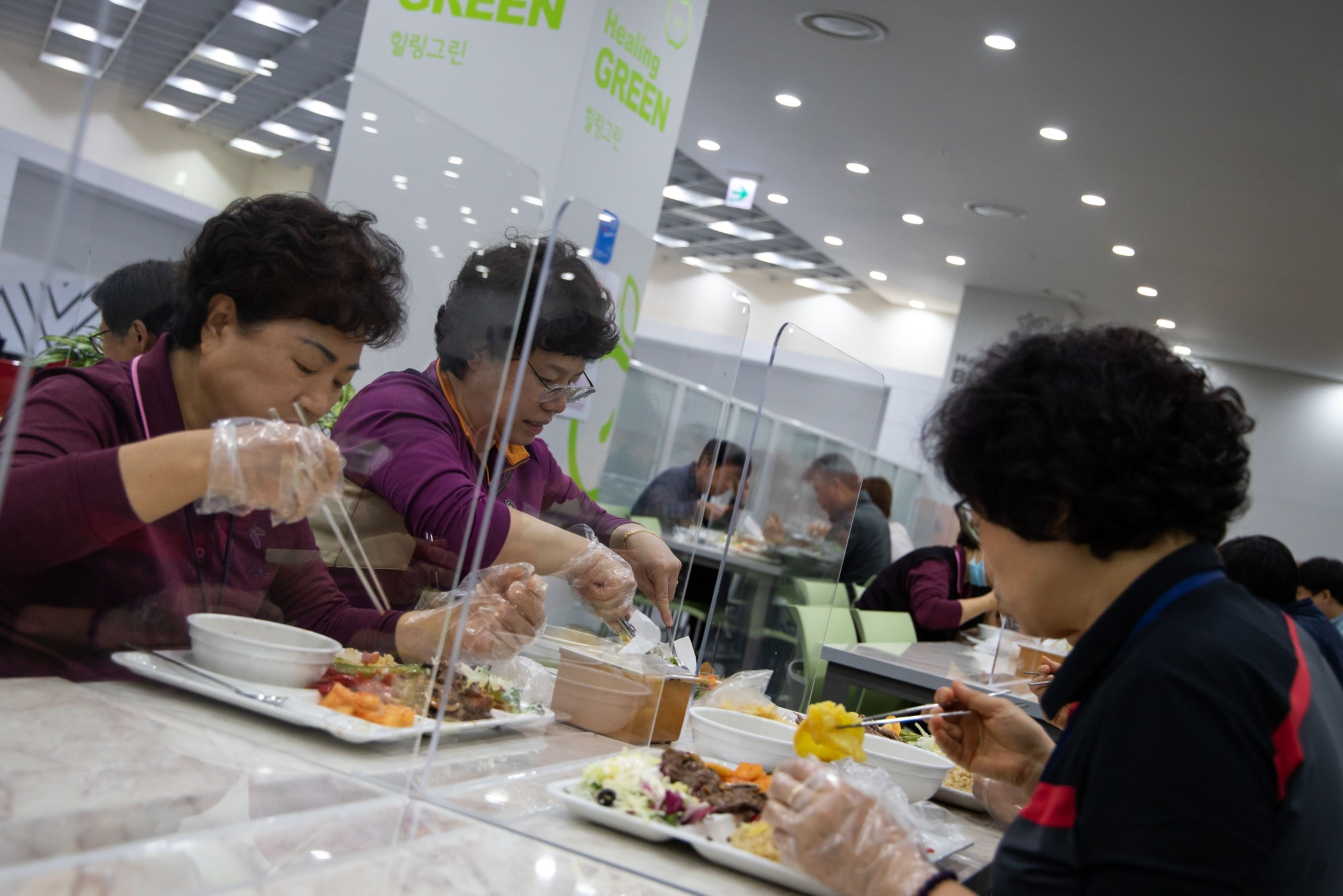Jun 12, 2020
South Korea crushed a huge virus outbreak — can it beat a second wave?
, Bloomberg News
What Would the Post-Covid-19 World Look Like?
South Korea became one of the world’s leading virus success stories by learning from past experiences. Now it’s using lessons from a fresh spate of clusters to prepare for what officials say will be an inevitable second wave.
The Asian nation once had the world’s second-worst outbreak, but it quelled it without ever having to lock down cities or impose heavy restrictions on social gatherings.

Instead, it launched a massive, technology-reliant testing and tracing campaign, a by-product of lessons learned from its bitter experience with Middle East Respiratory Syndrome in 2015. Its mass-testing and contract tracing garnered praise as a model for handling the virus.
Now it’s taking the same approach again, this time gaining experience from bringing under control a series of potentially dangerous virus flareups at nightclubs and distribution centers as it gets ready for an expected surge of new infections when the weather cools in the fall. Steps taken include introducing entry registration for nightclubs and gyms, requiring tracking and health-monitoring phone apps for foreign visitors, and installing mask vending machines in parks and subways.
“We’ve learned a few things from how the virus has been trending,” said Kwon Jun-wook, deputy director of the Korea Centers for Disease Control & Prevention, referring to recent outbreaks. “If we are thoroughly prepared, we can avoid the explosive resurgence of coronavirus.”
Effective Vaccine
South Korea’s containment of the pandemic, while remaining basically open, may present a path for other countries currently emerging from their lockdowns. It’s a roadmap of living with the virus, rather than trying to eliminate it.
“Unless there’s an effective vaccine, the virus will not disappear,” said Kim Yoon, professor of health policy and management at Seoul National University. “Another mass infection is possible, though we’d be able to handle it better now.”
South Korea became a virus hot spot in late February, when a cluster of cases broke out at a religious sect in Daegu city in the southeast of the country.
Until then, the country was testing people found through contact tracing. But since the religious group had more than 200,000 worshipers, it shifted to what’s known as community testing: it got a list of the sect’s members and began testing them all, regardless of whether they showed symptoms or had contact with an infected person.
National Hero
By mid-March, the outbreak was under control. Jung Eun-kyeong, the head of the Korea CDC, became something of a national hero for her management of the response. President Moon Jae-in’s approval ratings jumped. And the director general of the World Health Organization on several occasions praised South Korea’s strategy as a model that other countries could follow.
The success traces back to the country’s MERS outbreak in 2015 when a lack of test kits prompted infected patients to go from hospital to hospital, spreading the virus widely. Afterward, the country created a system to allow rapid approval of the kits.
“COVID-19 landed in South Korea when we had the system in place for such disease control and we had trained for it for years,” said Jung Ki-suck, a former director of the Korea CDC now teaching pulmonology at Hallym University Medical Center. The country’s testing approach was learned through “the bitter experience with the MERS outbreak,” he said.

Although South Korea overcame its initial outbreak, cases have been ticking up again. The country has reported at least 38 new infections every day for the past week, bringing its total to 12,003. It has confirmed 277 deaths. On Friday, South Korean health officials warned the public not to let its guard down as small clusters of infections continue to break out.
When a spate of new cases emerged linked to nightclubs in the Itaewon area of Seoul in May, the country attempted to again apply its “come forward, get tested” strategy. But many gay customers feared doing so given the country’s lingering homophobia. And unlike in the case of the religious sect, lists of customers were either incomplete or inaccurate as many left fake names. To mitigate the fear, health officials set up free, anonymous testing centers. The number of new cases stemming from the clubs fell to just one a day after spiking to almost 300.

Learning from that outbreak, South Korea created an electronic entry and exit registration system for high-risk establishments such as nightclubs and gyms. From this week, people who want to visit such places need to get a QR code on their mobile phone and show it to the facility manager, who will scan the code into an encrypted file.
To address privacy concerns, health officials said the system would only be used when the country is at its highest -- red -- alert, and the information would be destroyed after four weeks.
As the pandemic escalated in other countries, South Korea also began to see a spike in so-called imported cases, in which foreign visitors and Korean nationals returning from overseas were infected, many of them with mild or no virus symptoms.
Tracking App
To stem the potential spread domestically, airport officials required all passengers arriving from overseas to download an app that tracks their whereabouts and keeps tabs on their health. The users get a text message at 10 a.m. every day for 14 days, with a reminder to input their health condition. The data is relayed to health officials who also call to check on the people.
The examples show how South Korea plans to stay open even if there is a second wave. The country has been reopening schools and public facilities and has replaced its social distancing with a more relaxed “distancing in daily life” slogan.
It stands in contrast to places such as Singapore, where -- although schools have reopened -- bars, nightclubs, restaurants and gyms remain closed.

But even though South Korea has successfully kept its country open, and has proven tools to fight big outbreaks, it’s far from complacent about what the future holds.
It acknowledges that it may need to resort to stricter measures such as lockdowns if the second wave does hit. The country has been stockpiling supplies and medical equipment as experts predict a much larger surge of infections in the fall. President Moon has warned that a second wave of cases is “inevitable.”
“We may have to lock down or make everyone stay at home in autumn if the situation gets out of control,” said Kim Woo-joo, a professor at Korea University Guro Hospital and former special aide to the prime minister on combating the MERS outbreak. “We have managed to fight against the virus without locking down cities so far, but it ain’t over till it’s over.”
